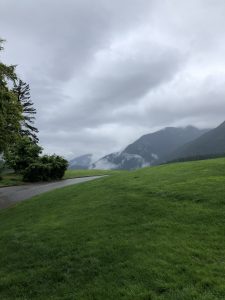Hi everyone!
My name is Aidan McConnell. I am a Cultural Studies Major in my fourth year at UBC. Living in North Vancouver, I have fallen in love with the coastal mountains I have been surrounded by for the past decade. Living on and around these mountains, I have developed a passion for skiing and mountain biking.
I grew up in Toronto, Ontario and moved out west in the summer of 7th Grade. Coming from Ontario, I didnt have much knowledge of Canadian History and its cultural background. Since moving to Vancouver, I have been exposed to so much more of our countries colonial history. I was falsely lead to believe Canada, in regards to our neighbours to the south, was a country built with a rigid moral structure. Throughout my years at UBC I have been privileged enough to have been shown how this is not the case, and exposed to our rather dark past.

Image Taken by me at the mouth of the Capilano River.
As mentioned before, I am living in North Vancouver, just a couple-minute walk from the Capilano Suspension Bridge and the Capilano River Hatchery. These are two very popular tourist attractions and I would just like to share with you quickly the history of these two landmarks as it is something I did not know about myself until recently. The name Capilano belongs to the Squamish Nation, originally being spelt as “Kia’palano” which means “beautiful river” and was the name of a former Squamish chief that lived in this area in the 1800’s. A team, lead by another Squamish chief named August Jack Khahtsahlano were responsible for the swimming of the ropes to support the bridge across the treacherous river. Just up-river from the Suspension Bridge, lies the Salmon Hatchery. This offers a very informative viewing experience for visitors explaining the hatching process of the different fish that come here to spawn, and in the fall, salmon returning to the Capilano River provide an important food, social and ceremonial fishery for the Squamish First Nation.
To my understanding, this course is about revisiting Canadian Literature through a historical lens. Together, we will look at a broad range of stories from both settler, and Indigenous writers and draw our attention to why certain stories spend so much time under the spotlight, and others do not.
I am very much looking forward to reading and dissecting the various course readings with you all via our blogs. Being a Cultural Studies major I have read many papers and books on this topic at hand, as well as written papers on the subject, but I am excited to further my knowledge and understanding of Canadian Literature and its history. Something I am especially looking forward to is taking a deeper look into the stories that we are most commonly shown to us, but more importantly looking into the stories that are not show to us so regularly. I strongly believe that in order to be informed and conscious of Canada’s history, it is crucial to have an understanding of both of these stories, those that are shown and those that are not.
Works Cited
Our History: Capilano Suspension Bridge Park. (n.d.). Retrieved January 16, 2021, from https://www.capbridge.com/our-story/history/
Government of Canada, F. (2020, November 09). Capilano River Hatchery. Retrieved January 16, 2021, from https://www.pac.dfo-mpo.gc.ca/sep-pmvs/projects-projets/capilano/capilano-eng.html
2 Comments
Hello Aidan,
Thank you for your introduction, it is a pleasure to meet you. I too grew up in Toronto, many, many years ago! At that time, the city was known as “Hog Town” – because Torontonians were stereotyped as greedy people compared to other Canadians. Another interesting historical story. I hope you enjoy the challenges and rewards that 372 will offer.
Hi Aidan,
It’s nice to meet you, as a resident of Ontario and someone who has spent the majority of my educational experience within the Ontario curriculum, I whole heartedly agree with the sentiment of the failure and rewriting of history that is taught in schools here. My first exposure to the true ongoing nature of Canada was at entering UBC. I do wonder if perhaps you have any inclination as to why Ontario chooses to educate its residents in such a manner?
I also wanted to say thank you for sharing the history behind the name Capilano and the building of the bridge as well as the landscape of the area, and for painting a vivid image of what it is that the visitors come to experience and know about the area and the important role played by the River Hatchery. I look forward to reading more of your blog posts and your perspective and opinions on the texts that we will be reading from the perspective of a Cultural studies major.